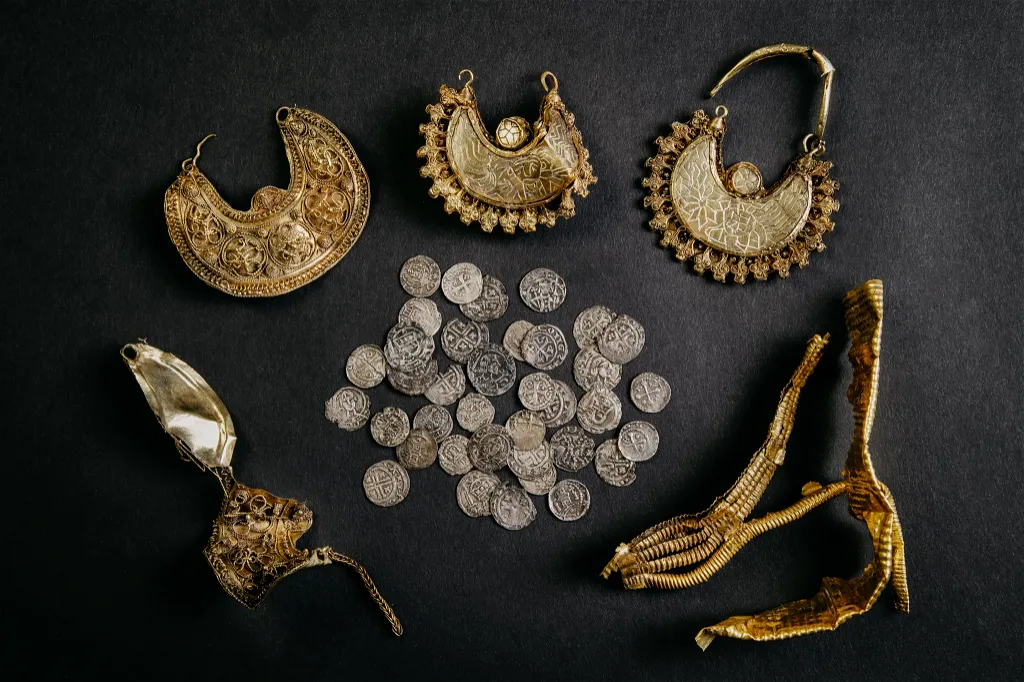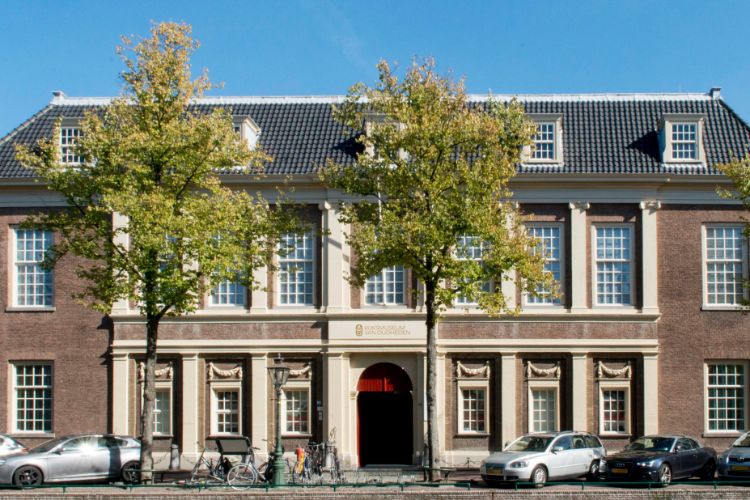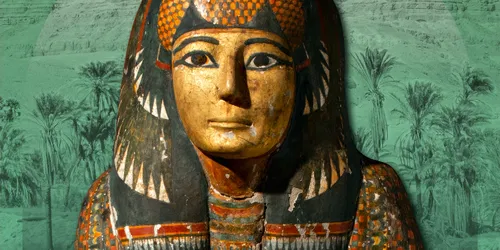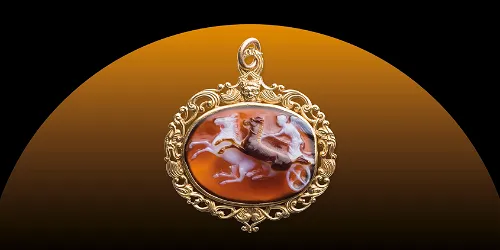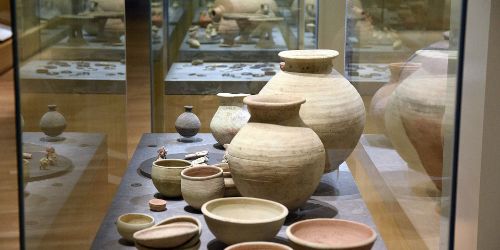Exhibition 'The treasure find of Hoogwoud' in National Museum of Antiquities
In 2021, a detectorist in Hoogwoud (municipality of Opmeer in North Holland) found a thousand-year-old gold treasure: four decorated gold pendants in the shape of a crescent moon, along with two pieces of gold leaf that fit together and 39 small silver coins. Dating the coins in the period 1200-1250 indicates that the valuables were hidden in the ground around the middle of the 13th century. The jewelry was already two centuries old by then and constituted an expensive and treasured possession.
The Hoogwoud treasure find will be on display in a display case behind the Egyptian temple in the Temple Hall, our free admission hall, through August 28, 2023. Later this year, the jewelry and coins will have a place in the new temporary exhibition The Year 1000 (on view from Oct. 13, 2023).
Gold jewelry from troubled times
Gold jewelry from the "High Middle Ages" is extremely rare in the Netherlands. Moreover, important historical events took place during the period in which this treasure find was buried. It is a restless time of wars between West Friesland and the county of Holland, during which the Dutch count William II is killed in the vicinity of Hoogwoud. This makes the treasure find of great significance for the archaeology and history of North Holland and West Friesland - and even of (inter)national importance.
Jewelry and coins
The most important objects from the Hoogwoud treasure find are the four ear pendants from the eleventh century. They are two pairs about five centimeters wide: two pendants with engraved representations and two with decorations in filigree. These are fine, twisted threads made of gold beads. The jewelry is decorated on one side and has fragile hanging brackets. This suggests that they were probably not inserted through ears, but were worn on a hood or headband. Thus, only one side was visible. Examples of this are known from German images from the same period.
